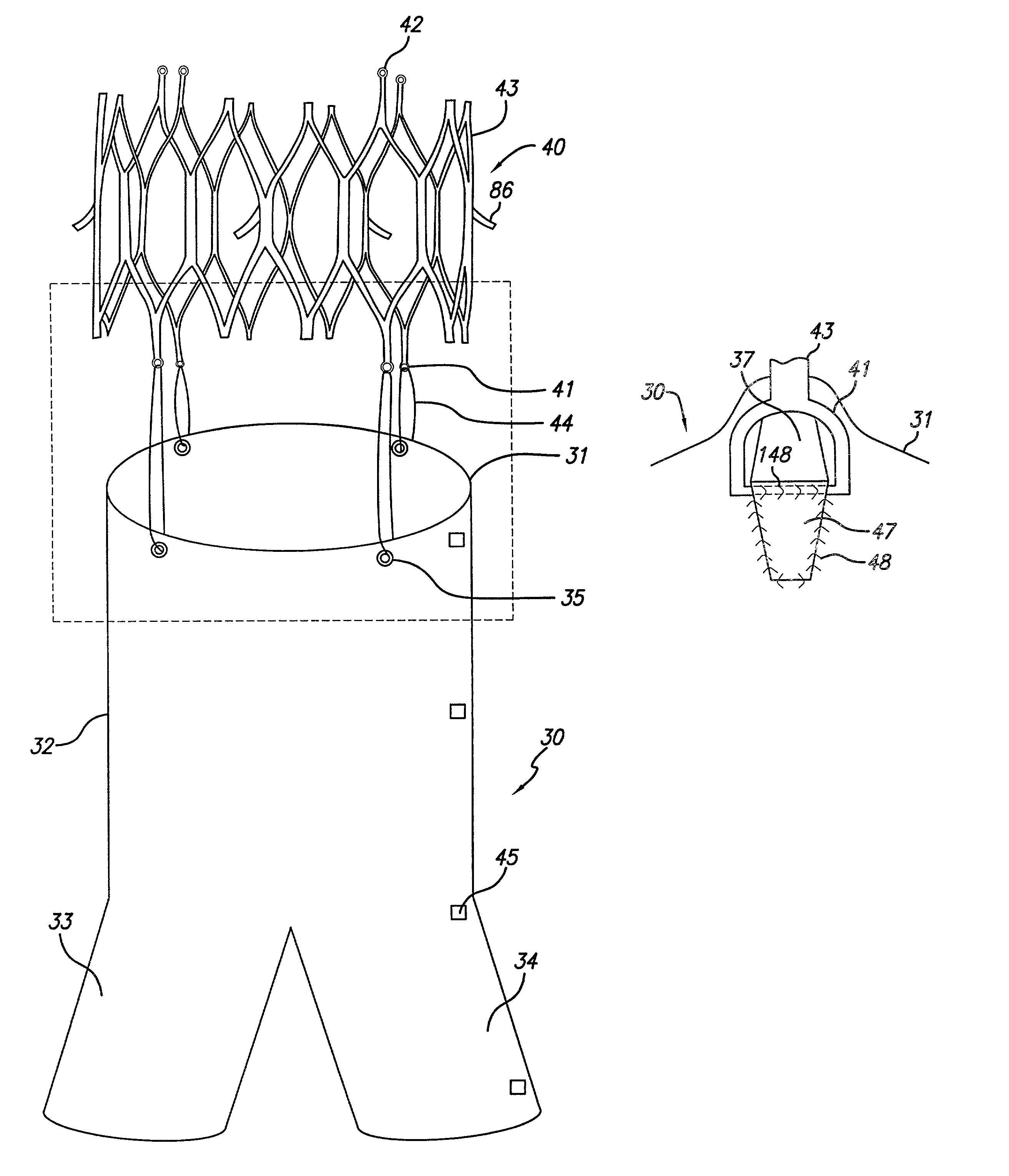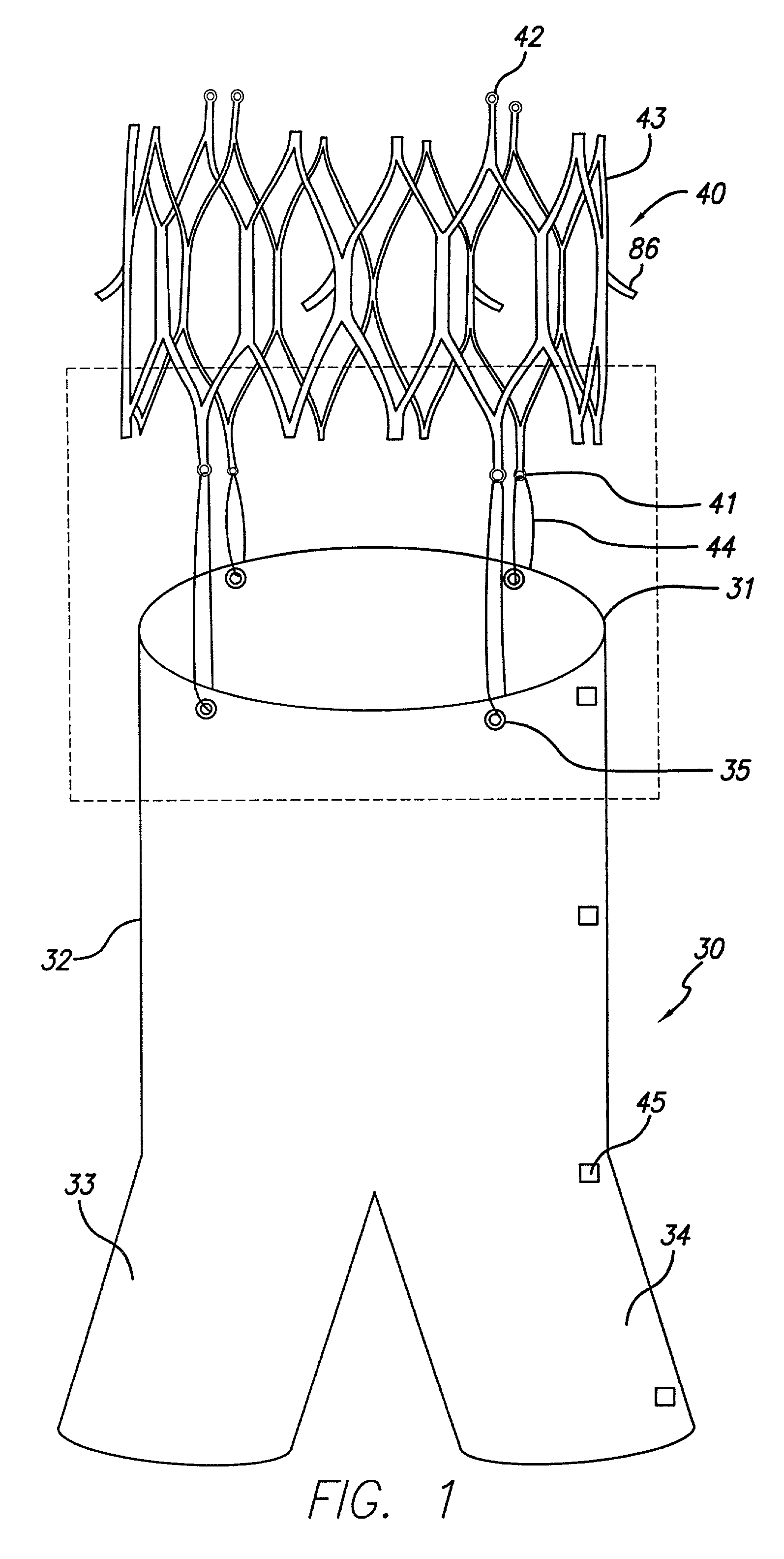Endovascular graft device and methods for attaching components thereof
- Summary
- Abstract
- Description
- Claims
- Application Information
AI Technical Summary
Benefits of technology
Problems solved by technology
Method used
Image
Examples
Embodiment Construction
[0084]The present invention relates to an endovascular graft and structure and methods for attaching and securing the individual components thereof.
[0085]FIG. 1 shows the main body component 30 and attachment stent 40 of a bifurcated endovascular graft that is one aspect of the present invention. The main body component 30 consists of a superior end or neck 31, trunk 32 and two limb support portions 33, 34. The limb support portions 33, 34 facilitate insertion, deployment, and attachment of limb components of the modular endovascular graft. Radiopaque markers 45 placed along the contra-lateral side of the graft material identify the neck 31, mid-point, bifurcation, and distal end of the contra-lateral limb support portion 34, thereby facilitating placement within the patient's body.
[0086]The anchoring or attachment stent 40 includes an expandable frame 79 and has connector eyelets 41 at its distal end, loading eyelets 42 at its proximal end, and attachment hooks or barbs 86 at its m...
PUM
 Login to View More
Login to View More Abstract
Description
Claims
Application Information
 Login to View More
Login to View More - R&D
- Intellectual Property
- Life Sciences
- Materials
- Tech Scout
- Unparalleled Data Quality
- Higher Quality Content
- 60% Fewer Hallucinations
Browse by: Latest US Patents, China's latest patents, Technical Efficacy Thesaurus, Application Domain, Technology Topic, Popular Technical Reports.
© 2025 PatSnap. All rights reserved.Legal|Privacy policy|Modern Slavery Act Transparency Statement|Sitemap|About US| Contact US: help@patsnap.com



